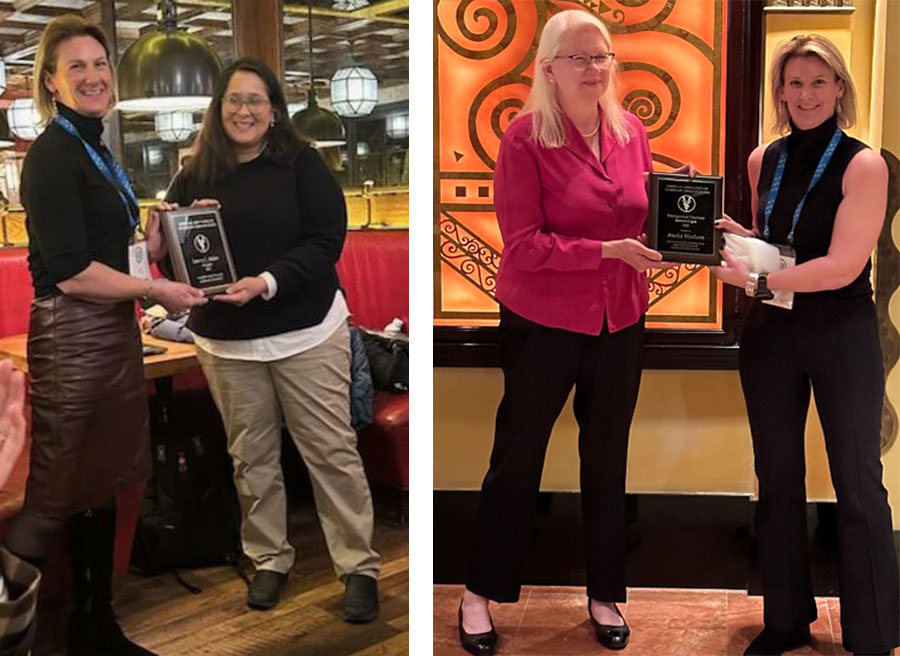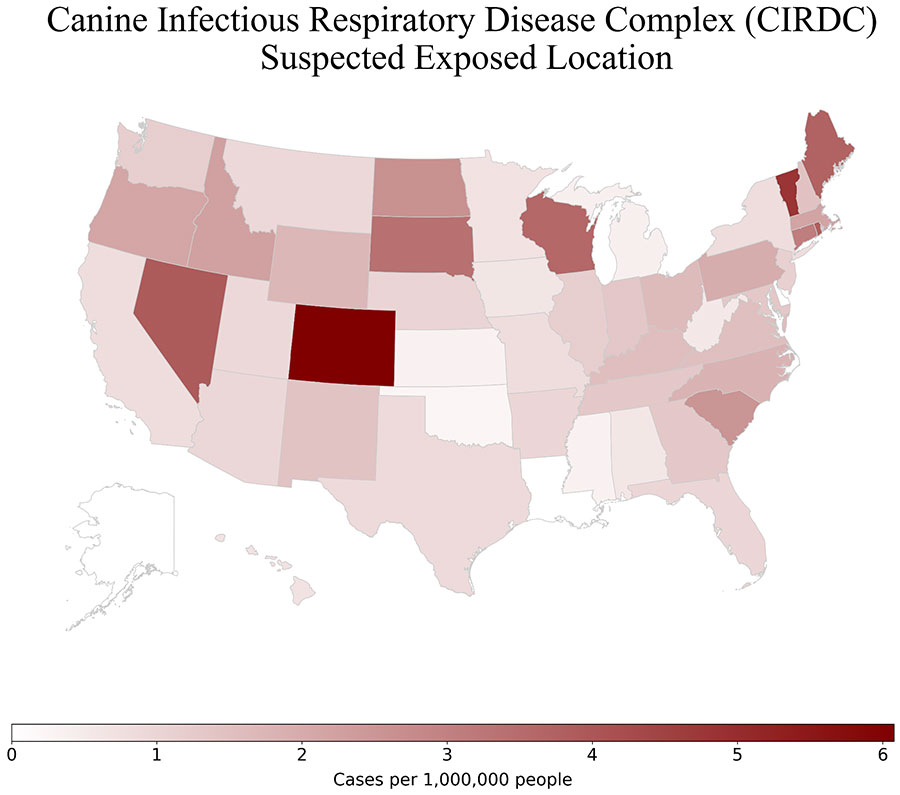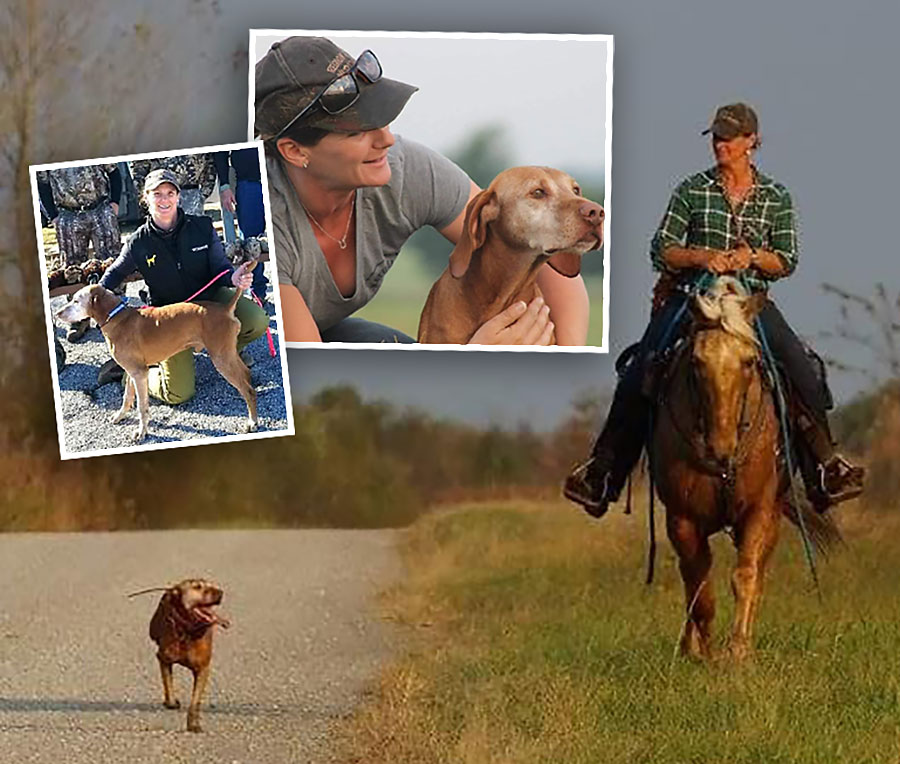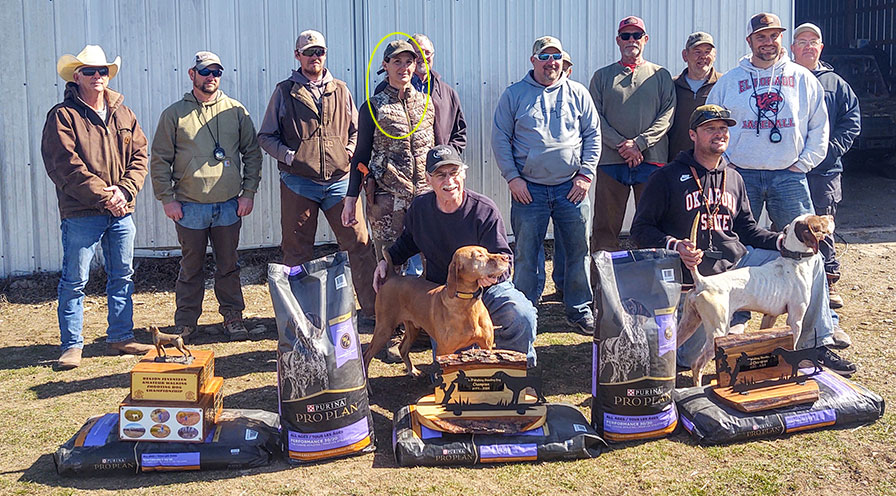Veterinary researcher brings championship pedigree to animal disease investigations
Recent paper looks at SARS-CoV-2 biomarkers of disease
One of the newest researchers in the College of Veterinary Medicine literally knows what it takes to be – or at least to have -- the “top dog”. While Dr. Laura Miller’s professional occupation includes more than 20 years of experience with the USDA, and a wealth of experience in investigating a variety of viral animal diseases, her side activities have brought her a certain amount of renown in a much different field.
“I have a very famous dog that is well known throughout the country — a national champion [pointing dog] in the field trial, multiple times over,” Dr. Miller said. “My dog, Bull, [a Vizsla] was bred and born in Kansas, and has now been elected to the Kansas Hall of Fame [Editor's note: induction ceremonies will be held June 8]. I currently compete with his son, Sawney (Millstar’s Lion Rampant), who is qualified for national championships and has won and placed in Kansas regularly – when my new job allows me time to participate.”
As an associate professor of veterinary virology, Dr. Miller’s job often centers around the investigation of viruses, RNA, genomics and immunology, especially in regard to diseases that are relevant to the U.S. swine industry. She has also investigated viruses that affect other species, including in humans, such as coronaviruses.
Dr. Miller has served the past year as president of the American Association for Veterinary Immunologists, and has been involved in several research collaborations.

Left: Incoming 2024 President Leela Noronha presents the CVM's Dr. Laura Miller with a with a plaque in appreciation for her leadership and service as the outgoing president of the American Association of Veterinary Immunologists, or AAVI. Right: Dr. Amelia Woolums receives the DVI award from the Incoming AAVI President Dr. Miller during the AAVI business luncheon held in January 2023.
One of her latest works as a senior author was published in the Jan. 8 issue of Microbiology Spectrum: “How do deer respiratory epithelial cells weather the initial storm of SARS-CoV-2 WA1/2020 strain?”
“In this article, we compare deer respiratory epithelial cells and human epithelial cells because deer obviously transmit and get SARS very easily, but they don't show any disease,” Dr. Miller said. “That's going to give us clues about asymptomatic COVID in humans. We identified pathways and genes that were dysregulated in comparison.”
Another side project has included helping conduct and review surveys among dog owners to help collect data about the “mystery dog illness” that has been in recent news headlines. Participants in the “mystery dog illness” tracking group provided data to Dr. Miller through her dog-world connection. She has shared some of this information with faculty in the Kansas State Veterinary Diagnostic Laboratory, which offers testing services for the canine illness in addition to its regular diagnostic services.

Dr. Miller has assisted in conducting surveys and collecting data on a recent canine illness. This map helps show some of the results that were collected so far.
Dr. Miller supervises a master's student, who recently submitted a paper to Preventive Veterinary Medicine: "Canine Infectious Respiratory Disease Complex: A Case Study of Epidemiology and Risk Factor Investigation Based on Survey Data from Dog Owners Across the United States of America." Dr. Miller's and a collaborator Dr Ben Rader, Harvard/Boston Children’s Hospital, are presenting at Cornell’s inaugural "AI for Veterinary Medicine" the week of April 19. The title is,"Digital Surveillance of Atypical Canine Infectious Respiratory Disease Complex using Large Language Models."

Lundy's Red Bull is a national champion Vizsla and competed in several events. He was elected to the Kansas Hall of Fame.
So what attracted Dr. Miller to join the faculty in the K-State Department of Diagnostic Medicine/Pathobiology?
“This was a great chance to do some really groundbreaking research and to give back,” Dr. Miller said. “During COVID, I felt like it was time to make the next step. The problem with these pandemics that there are diseases that are jumping from animals to humans. The key is to identify emerging animal diseases and help train veterinarians to stop them before the next one spills over to humans. K-State is a great place for this kind of One Health approach.”

Bull's son, Sawney "Millstar's Lion Rampant" won Region 17 Runner-up Walking Amateur Shooting Dog Champion in Moline, Kansas, on Feb. 24. Dr. Miller is circled above.
Dr. Miller's publications since joining the KSU CVM
- Nicholson, T.L., Waack, U., Fleming, D.S., Chen, Q., Miller, L.C., Merkel, T.J., Stibitz, S. The contribution of BvgR, RisA, and RisS to global gene regulation, intracellular cyclic-di-GMP levels, motility, and biofilm formation in Bordetella bronchiseptica. Frontiers in Microbiology (in press).
- Hu, Y., Wu, X., Tian, Y., Ren, J., Fan, Y., Li, F., Miller, L.C., Lee, C., Bu, X., Zhang, Q., Cong X., Li, J., Du Y. and Qi, J. GTPase-binding element of Porcine Mx1 plays a dominant role in inhibiting the N-Nsp9 interaction and thus inhibiting PRRSV replication. Journal of Virology (in press).
- Sarlo Davila, K. M., Nelli, R. K.*, Phadke, K. S., Ruden, R. M., Sang, Y., Bellaire, B.H., Gimenez-Lirola, L. G., Miller, L.C.* 2023. How Deer respiratory epithelial cells weather the initial storm of SARS-CoV-2. Spectrum Microbiol Spectr. 2024 Jan 8;:e0252423. doi: 10.1128/spectrum.02524-23. [Epub ahead of print] PubMed PMID: 38189329.
- Wu X, Chen L, Sui C, Hu Y, Jiang D, Yang F, Miller LC, Li J, Cong X, Hrabchenko N, Lee C, Du Y, Qi J. 3Cpro of FMDV inhibits type II interferon-stimulated JAK-STAT signaling pathway by blocking STAT1 nuclear translocation. Virol Sin. 2023 Jun;38(3):387-397. doi: 10.1016/j.virs.2023.03.003. Epub 2023 Mar 14. PubMed PMID: 36921803.